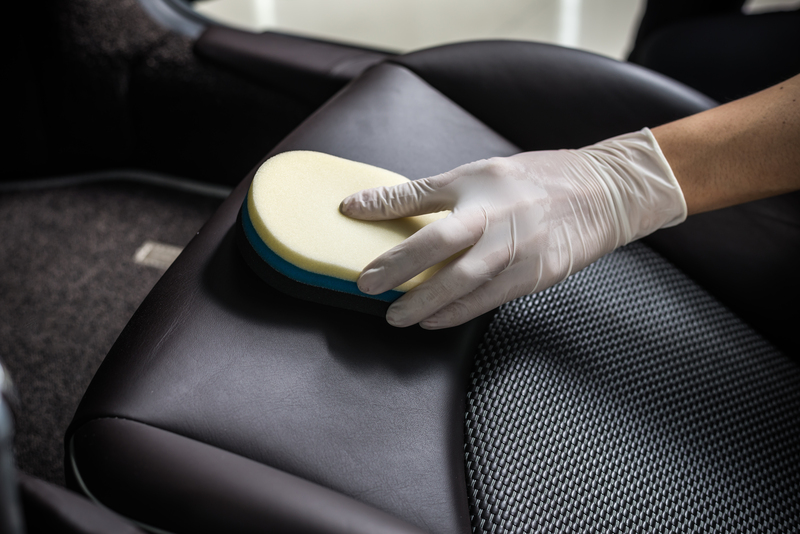Enhancing Health: The Role of Air Quality in Indoor Spaces
Posted on 20/09/2025
Enhancing Health: The Role of Air Quality in Indoor Spaces
Indoor air quality has emerged as a crucial component of overall health and well-being in the modern world. With an increasing amount of time spent indoors--whether at home, in offices, or public spaces--focusing on the quality of the air we breathe indoors is more important than ever. This comprehensive guide delves into the significance of air purity within enclosed spaces, explores potential pollutants, and highlights ways to promote healthier, more comfortable indoor environments.
Understanding Indoor Air Quality and Its Importance
Air quality inside buildings refers to the condition and cleanliness of air within enclosed spaces. Unlike outdoor air, which can disperse pollutants rapidly due to wind and weather, indoor air often becomes a sink for contaminants. Considering that the average person spends nearly 90% of their time indoors, the impact of indoor air pollution on personal health is both profound and far-reaching.
What is Indoor Air Pollution?
Indoor air pollution describes the presence of harmful substances in the air of homes, schools, workplaces, and other buildings. These can range from obvious irritants like smoke to less visible dangers such as volatile organic compounds (VOCs), mold spores, and microbial contaminants. The health risks associated with poor indoor air quality can be acute or chronic and often disproportionately affect vulnerable groups like children, the elderly, and individuals with respiratory issues.

Common Sources of Indoor Air Contaminants
A wide array of sources contribute to declining air quality within indoor spaces. Identifying these culprits is the first step to mitigation.
- Building Materials: Many construction products, including paints, adhesives, and pressed wood furniture, emit VOCs and other pollutants over time.
- Household Products: Cleaning supplies, air fresheners, and personal care items frequently release chemicals that accumulate indoors.
- Combustion By-Products: Gas stoves, fireplaces, and even candles can emit carbon monoxide and particulate matter.
- Biological Agents: Mold, dust mites, animal dander, and pollen can thrive in damp, poorly ventilated environments.
- Outdoor Pollutants: When windows or doors are opened, pollutants like pollen, vehicle exhaust, and smog can infiltrate the indoor environment.
- Occupant Activities: Activities such as cooking, smoking, and DIY projects can generate substantial airborne contaminants.
The Problem with Poor Indoor Air Quality
Exposure to substandard air inside buildings is linked to a range of health problems, including respiratory illnesses, headaches, fatigue, and even serious conditions like asthma or cardiovascular disease. Moreover, persistent indoor air pollution can aggravate allergies and trigger the onset of chronic illnesses in sensitive individuals. Therefore, taking measures to maintain and improve indoor air quality is essential for overall health enhancement.
Health Impacts of Indoor Air Pollutants
To appreciate the value of clean air within indoor spaces, it is vital to understand the concrete health consequences associated with typical indoor contaminants.
Short-Term Effects
- Eye, nose, and throat irritation
- Dizziness and headaches
- Allergic reactions
- Exacerbation of asthma symptoms
Long-Term Effects
- Chronic respiratory diseases such as asthma and bronchitis
- Cardiovascular problems
- Increased risk of cancer (notably from radon or prolonged VOC exposure)
- Weakened immune systems
These risks are amplified for children, pregnant women, older adults, and people with pre-existing health issues. Consistently improving the quality of indoor air can significantly reduce the prevalence and severity of such health challenges.
How Indoor Air Quality is Measured
The assessment of air purity in indoor environments relies on various metrics and monitoring tools. The key measurements include:
- Particulate Matter (PM2.5 and PM10): These fine particles can penetrate deep into the lungs and even enter the bloodstream.
- Volatile Organic Compounds (VOCs): Many VOCs are toxic or irritating, emanating from paints, solvents, and cleaning agents.
- Carbon Dioxide (CO2): Elevated CO2 levels indicate poor ventilation and may cause cognitive fatigue.
- Humidity Levels: Maintaining humidity between 30%-50% helps minimize mold growth and dust mites.
- Carbon Monoxide (CO): A colorless, odorless, and potentially deadly gas from incomplete burning of fuels.
- Biological Contaminants: Mold spores, bacteria, and viruses can be sampled and analyzed for indoor environments.
Regular monitoring of indoor air is crucial, especially in settings like schools, hospitals, and offices, where numerous people share the same space and may be exposed to accumulative pollutants.
Strategies for Enhancing Indoor Air Quality
Optimizing the health value of air in enclosed areas involves a multi-pronged approach. Here are some practical strategies:
1. Improved Ventilation
- Natural ventilation: Regularly open windows and doors (when outdoor conditions allow) to exchange stale indoor air with fresh outdoor air.
- Mechanical ventilation: Use exhaust fans in kitchens and bathrooms to remove moisture and pollutants at their source.
- Advanced air exchange systems: Consider installing whole-house or energy-recovery ventilation (ERV/HRV) systems for continuous, balanced airflow.
2. Source Control
- Choose low-emission products: Opt for paints, furniture, and building materials labeled as low-VOC or certified environmentally friendly.
- Reduce use of harsh chemicals: Select natural or green cleaning supplies to minimize chemical buildup indoors.
- Ban indoor smoking: Create a strict no-smoking policy inside buildings to prevent tobacco residue from compromising indoor air health.
3. Air Filtration & Purification
- High-Efficiency Particulate Air (HEPA) filters: Installing HEPA filters in HVAC systems or using portable air purifiers captures fine particles and allergens efficiently.
- Activated carbon filters: Useful for removing odors, gases, and certain chemical contaminants that traditional filters may miss.
- Ultraviolet germicidal irradiation (UVGI): This technology can neutralize airborne bacteria, viruses, and mold spores in HVAC ducts.
4. Maintain Ideal Humidity Levels
- Use dehumidifiers: Especially in damp areas prone to mold growth.
- Use humidifiers: During dry winter months to keep humidity in the healthy 30-50% range.
- Monitor with hygrometers: Regularly check humidity to ensure that conditions remain optimal for respiratory health.
5. Regular Cleaning and Maintenance
- Vacuum with HEPA filters: Standard vacuum cleaners may release dust back into the air; HEPA models trap tiny allergen particles.
- Wash bedding and curtains: Do so regularly to reduce dust mites and pet dander.
- Fix leaks promptly: Address moisture problems to prevent mold formation and structural damage that can harbor pollutants.
- Clean or replace HVAC filters: Clogged filters lose effectiveness and allow more particles to circulate indoors.
6. Incorporate Indoor Plants (With Caution)
- Some studies suggest that certain houseplants can absorb VOCs and improve air freshness. However, excessive plants or overwatering can create humidity issues or harbor mold, so moderation and proper plant care are essential.

The Future of Indoor Air Quality Management
Technological innovation is reshaping the way we manage and perceive healthy indoor air. Advances in smart home devices now enable real-time monitoring of various air parameters, alerting occupants when intervention is required. Additionally, the use of eco-friendly building designs and materials, along with automation in ventilation and purification systems, is paving the way for healthier indoor environments.
Workplace air quality has become a focal point, particularly in light of the COVID-19 pandemic, as organizations strive to create safer, more productive spaces. Improved standards and new building codes increasingly mandate higher performance in ventilation, filtration, and contaminant control.
Key Trends to Watch
- Integration of air quality monitors: Many smart homes are now equipped with wireless sensors to track levels of CO2, humidity, and pollutants.
- Passive house certification: Newer buildings are seeking certifications that demand rigorous air quality and energy efficiency benchmarks.
- Green building materials: Innovative products that emit fewer chemicals or purify air as part of their core function.
- Public health campaigns: Governments and health organizations providing guidelines and incentives for maintaining superior air indoors.
Conclusion: Prioritizing Air Quality for Enhanced Health
The evidence is clear: Improving air quality indoors is key to supporting both immediate comfort and long-term health. Every individual and organization can take practical steps to ensure their indoor spaces are safe, clean, and conducive to health. From smart ventilation and filtration to mindful cleaning habits and using eco-friendly materials, every measure contributes to a healthier lifestyle and environment.
As awareness grows, there has never been a better time to assess and upgrade the health standards of the air within your indoor world. By fostering continuous improvement and education, we can all breathe easier and live healthier lives.
Take Action Today:
- Assess your own indoor air through basic sensors or professional evaluation.
- Implement small changes--like increasing ventilation and reducing chemical use--that have significant health benefits.
- Encourage workplaces and schools to prioritize clean and healthy air as a fundamental part of well-being.
Remember: Healthy lives begin with healthy air. Make indoor air quality a cornerstone of your health strategy and enjoy the lasting advantages for you and your loved ones.




